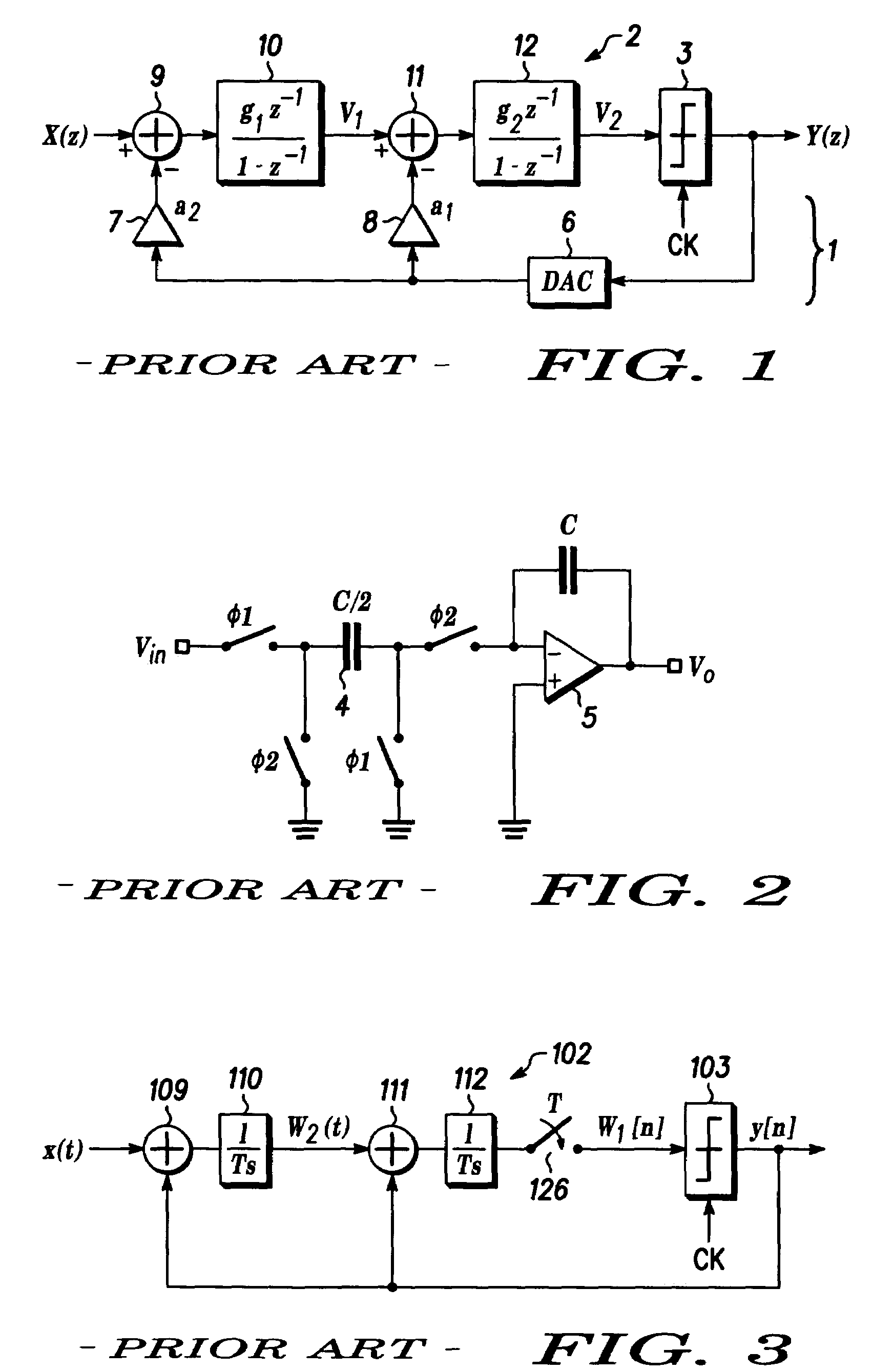Analog-to-digital sigma-delta modulator with FIR filter feedback
a technology filter feedback, which is applied in the field of analog-to-digital sigma-delta modulator, can solve the problems of inapplicability of the proposed technology to an analog-to-digital modulator, change the noise transfer function of the modulator, and inability to extend to higher-order filtering
- Summary
- Abstract
- Description
- Claims
- Application Information
AI Technical Summary
Problems solved by technology
Method used
Image
Examples
Embodiment Construction
[0024]The design of a sigma-delta modulator must take account of many different criteria and achieve a suitable compromise between sometimes conflicting requirements. Thus, power consumption in a sigma-delta modulator is a direct function of its sampling frequency and dynamic range. Sampling capacitors such as 4 in the discrete-time switched-capacitor (SC) implementation shown in FIG. 2 of an stage of the integrator 2 shown in FIG. 1 are chosen with regard to the thermal noise, KT / C. On the other hand, capacitors determine the circuit speed. Transient response requirements for an SC-integrator in a sigma-delta modulator depend on: the total load capacitance, the amplifier architecture and the input signal activity.
[0025]During the integration phase, the output of an SC-integrator 2 changes from an initial level to a new level. For large input voltage steps, the integrator amplifier 5 first goes through a large-signal response and when the output signal approaches the final level, th...
PUM
 Login to View More
Login to View More Abstract
Description
Claims
Application Information
 Login to View More
Login to View More - R&D
- Intellectual Property
- Life Sciences
- Materials
- Tech Scout
- Unparalleled Data Quality
- Higher Quality Content
- 60% Fewer Hallucinations
Browse by: Latest US Patents, China's latest patents, Technical Efficacy Thesaurus, Application Domain, Technology Topic, Popular Technical Reports.
© 2025 PatSnap. All rights reserved.Legal|Privacy policy|Modern Slavery Act Transparency Statement|Sitemap|About US| Contact US: help@patsnap.com



